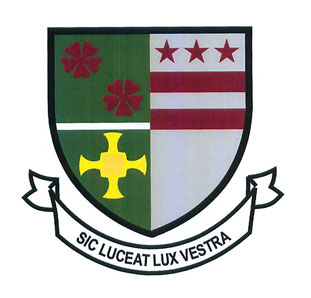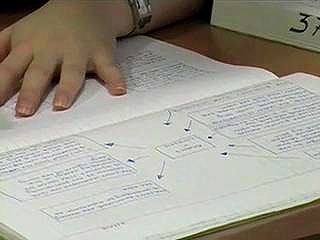



 St Robert of Newminster Catholic School
St Robert of Newminster Catholic Schooland Sixth Form College
United Kingdom
Thinking Maps and School Effectiveness
A Study of a UK Comprehensive School
Analysis of Pupils' Perceptions of Themselves as Learners
 As with most schools, St Robert of Newminster School collects a range of assessment information on their learners and on their learner entry to school. This takes the form of reading age and SATs. This data assists the prediction of future academic success and the distribution of learners within the curriculum sets or groupings. However we were interested in whether the use of Thinking Maps® can impact on their academic self-concept.
As with most schools, St Robert of Newminster School collects a range of assessment information on their learners and on their learner entry to school. This takes the form of reading age and SATs. This data assists the prediction of future academic success and the distribution of learners within the curriculum sets or groupings. However we were interested in whether the use of Thinking Maps® can impact on their academic self-concept.
Young people’s perceptions of themselves as learners and active problem - solvers have been shown in numerous research studies to be a key element in their learning progress.
We decided to test the impact of the implementation of Thinking Maps® on learners’ academic self perceptions to determine whether or not the maps changed the way in which a group of Y7 (11 – 12 year olds) conceive of themselves as learners within educational settings.
 There is a general lack of available techniques for assessing general academic self perceptions so we used the Myself As a Learner Scale developed by Robert Burden Professor of applied Educational Psychology at Exeter University (publishers: nferNelson) (see Appendix 10).
There is a general lack of available techniques for assessing general academic self perceptions so we used the Myself As a Learner Scale developed by Robert Burden Professor of applied Educational Psychology at Exeter University (publishers: nferNelson) (see Appendix 10).
Using the MALS data on 156 learners on entry (September) produced a mean score of 60 .5 and after retesting 6 months later the mean score had risen to 67.2. This demonstrates a 10% rise in students’ positive self perceptions as learners and active problem solvers. The key elements, as identified by MALS, are:
- confidence in one’s own ability to do well in a variety of academic learning situations
- enjoyment in problem solving
- lack of anxiety
- access to and use of a wide vocabulary
- (MALS p.7 R Burden nferNelson)
When coupled with the questionnaire on Thinking Maps® to the same cohort, our preliminary findings indicate that the introduction of Thinking Maps® as a tool for teaching and learning has contributed to the increased learner confidence in their own ability and motivation as learners.
Thinking Maps® Pupil Responses Video Clip
Click on the play button above to watch the Thinking Maps® Pupil Responses in a Quicktime video. If you don't have quicktime on your Windows or Macintosh, download the free Quicktime Player on the Apple Quicktime site.
The Case Study sections are accessible in the links below and in the upper left column menu on each page of the St Robert Case Study.
- Project Overview
- Teacher Instructional and Higher Order Thinking Levels
- Teacher Methodologies
- Consistency and Frequency of Use
- Teacher Perceptions of Thinking Maps®
- Analysis of Pupils' Perceptions of Themselves as Learners
- Teacher Collaboration, Communication and Problem Solving
- Impact of Thinking Maps®
- Conclusion
- Video Clips
- Download Acrobat PDF copy of St. Robert Case Study